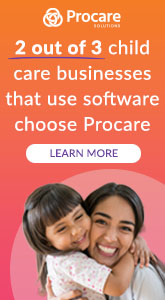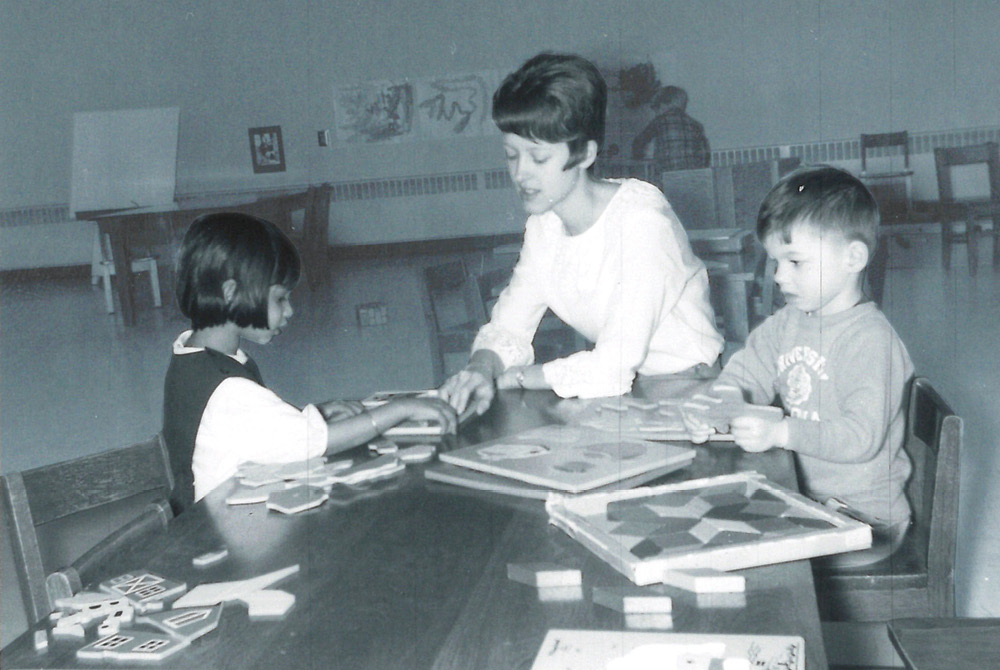Working in early childhood education can be overwhelming, I know this firsthand. I am an early childhood educator, small business owner and a state representative for Iowa House District 70. Sometimes it can seem as though there just are not enough hours in the day. Regardless, using your experience and expertise to advocate for the best interest of educators and children is vital. The majority of a child’s brain is already developed by the age of 5. Yet, access to early education is lacking, with 51 percent of families living in a child care desert, according to Save the Children Action Network. Without this education to aid in development before they reach age 5, a child is less likely to succeed in the future. They will be behind their classmates upon entering kindergarten and their early-learning counterparts are 20 percent more likely to receive a high school diploma (Save the Children Action Network). Being an advocate means helping people, legislators and voters, to make effective and informed policy choices. Anyone with passion for the issue can be an advocate, and advocacy comes in many forms. My journey to becoming an advocate does not have to be your journey. Rather, all of the steps I have taken may serve as a guide to determining your own plan of action.
Step One: Getting Acquainted
The first step to becoming an advocate was to get to know the subject. As a young, single mom, I knew very little about early education—I was still just learning how to care for a child. Taking my son to Head Start was monumental for the start of my career as an educator and advocate. By the time my second child was born, I had started a non-registered child care business. It began as a favor to close friends, but quickly turned into a professional career and a passion. I became registered with the Iowa Department of Human Services and then got to work on quality initiatives such as the Iowa QRS system and becoming nationally accredited through the National Association for Family Child Care. Both of these ventures required me to further my education. In addition to typical professional development opportunities, I earned my child development associate, associate’s degree in ECE, bachelor’s in ECE and a master’s degree in ECE, with a focus in teaching and diversity. These accolades are far from a requirement. However, I chose to continue my education not only to better serve the children in my program, but to become a better advocate. Through becoming a continuing education instructor, I also have been able to educate the workforce. The more I learned, the better voice I felt I could be for children, families and the profession. If pursuing additional education is financially daunting, look into whether your state participates in the T.E.A.C.H. early childhood program. Without it, I would never have been able to afford to go back to school.
Step Two: Getting Involved
Sending my son to Head Start ignited my passion for early care and education, and volunteering and furthering my education were just some of the ways I started getting involved in our field. Participating in quality initiatives for my own small business, an early learning center, also helped me get more involved. These initiatives required that I dig further into resources in my area, which not only taught me more about my areas of passion but connected me with leaders of ECE organizations. Making these connections led to my being asked to join committees, boards and working groups. I participated in the Iowa QRS oversight committee and sat on the board of Cedar Rapids’ chapter of the Iowa Association for the Education of Young Children. I joined the IAEYC early childhood workforce advisory committee, which I later became the chair of, and served as a council member for the national T.E.A.C.H. early childhood alliance.
Through work on these committees, I was able to network with like-minded professionals around my local area, my state and even on a national level. These opportunities continued to grow over the years and I continued traveling more. I was asked to speak on panels, attend conferences and present professional development sessions across the nation, growing my professional network and knowledge. One of the most important and life changing opportunities I was given was through Save the Children Action Network, which hosts an annual advocacy summit in Washington D.C. There, participants are given the tools to improve their advocacy skills. During the summit, you are able to gain valuable experience with a trip to Capitol Hill, where you advocate for ECE. The year I went, we were asking members of Congress to protect Head Start funding. I considered this a life-changing event, because it is what empowered me to eventually run for office. One piece of advice I always take with me from that powerful opportunity is something our mobilization manager told us during our role play activity. He said, “Do not worry about remembering all your bullet points, do not worry about memorizing all the statistics, just tell your story. No one can dispute your story. Your story is your story.”
ADVERTISEMENT
Step Three: Getting Organized
Stepping into the legislative sphere may seem like the hardest part, but it is how to achieve results. Remember, legislators are just people. We are here to serve, to listen and to learn. We want to hear from you. Many times, we rely on advocates to give us an understanding on topics that may not be their area of expertise. This step, like the others, comes in many different forms. Sharing posts and petitions on social media is a simple way to make an impact. It may not seem like much, but you would be surprised by the reach online petitions can have, especially when they get the attention of policymakers. Writing letters to the editor or drafting emails to send to legislators, are other tactics to make your voice heard. Letters to the editor are a good way to reach the masses, but emailing legislators, especially those that represent your district, ensures that policymakers see your concerns and hear your input. If we hear the same thing from multiple constituents, chances are we will take it into account. After all, you are the ones putting us into office.
Attending informational sessions, or even advocacy summits, can help keep you aware of what is happening in legislature and provide valuable connections. Legislative forums are also invaluable for learning about current topics in legislation and submitting questions you want answered. Lobbying at the Capitol, or setting up a casual meeting with your legislator, are among the most hands-on strategies you can use. If the thought of approaching legislators alone seems stressful, go alongside members of organizations you are a part of. There are regular “Days on the Hill,” where groups come to advocate for an issue and share personal stories that can help humanize the policies on lawmakers’ desks.
Step Four: Getting Elected
Becoming an elected official is not for everyone. Honestly, I never predicted it would be part of my journey. It was never something I was interested in nor once ever pondered—I just happened to be in the right place (the right House District) at the right time. One day I received a phone call from a current legislator who knew me for my early childhood expertise. She called and told me that the current state legislator for my district, who had held the seat for over 20 years, was going to be running for the senate instead. She asked if I would run. My first reaction was, “No way, I am a preschool teacher! I work with children, not politicians.”
She reminded me that in the Iowa House, there were currently no legislators that were experts in early care and education topics, but the request for change in those areas was growing. She asked that I take the time to meet with staff and other elected officials before I made my final decision. As I met with everyone, I kept hearing the same thing over and over: we need changes in child care and in preschool; we need to invest more in early education; we do not know this area and need someone at the Capitol who does. Eventually these sentiments pulled me in and I ran for office.
Again, I recognize that running for office is not for everyone, but remember that state legislator is not the only office you can run for. You could run for your local school board or your city council. You could run to be a board member of your local chapter of the National Association for the Education of Young Children or the NAFCC, or you could become a board member for your local Head Start association. Running for an elected position can be at a low level or high level, but you have the ability to make substantial impacts at each. Even when my bills do not pass or my debate points are not well received, I have still reached an audience that otherwise may not have been informed on the issues. There is always going to be someone who can learn from what you have to say.
Turning the Page
It is easy to feel overwhelmed. There are so many problems to be solved, subjects to learn and connections to make. However, if you turn this page remembering anything, let it be this: no two paths are identical and the smallest difference is still a difference. You may not have the time or the opportunity to accomplish all of the things I have mentioned, but even one step is a way to get involved. My experience may serve as a jumping-off point for your own path, or it may not be similar at all, but the thing that matters most is that you are aware of the need you can fill in our education and childcare systems. It needs you. We need you. They need you.
Related
ADVERTISEMENT












